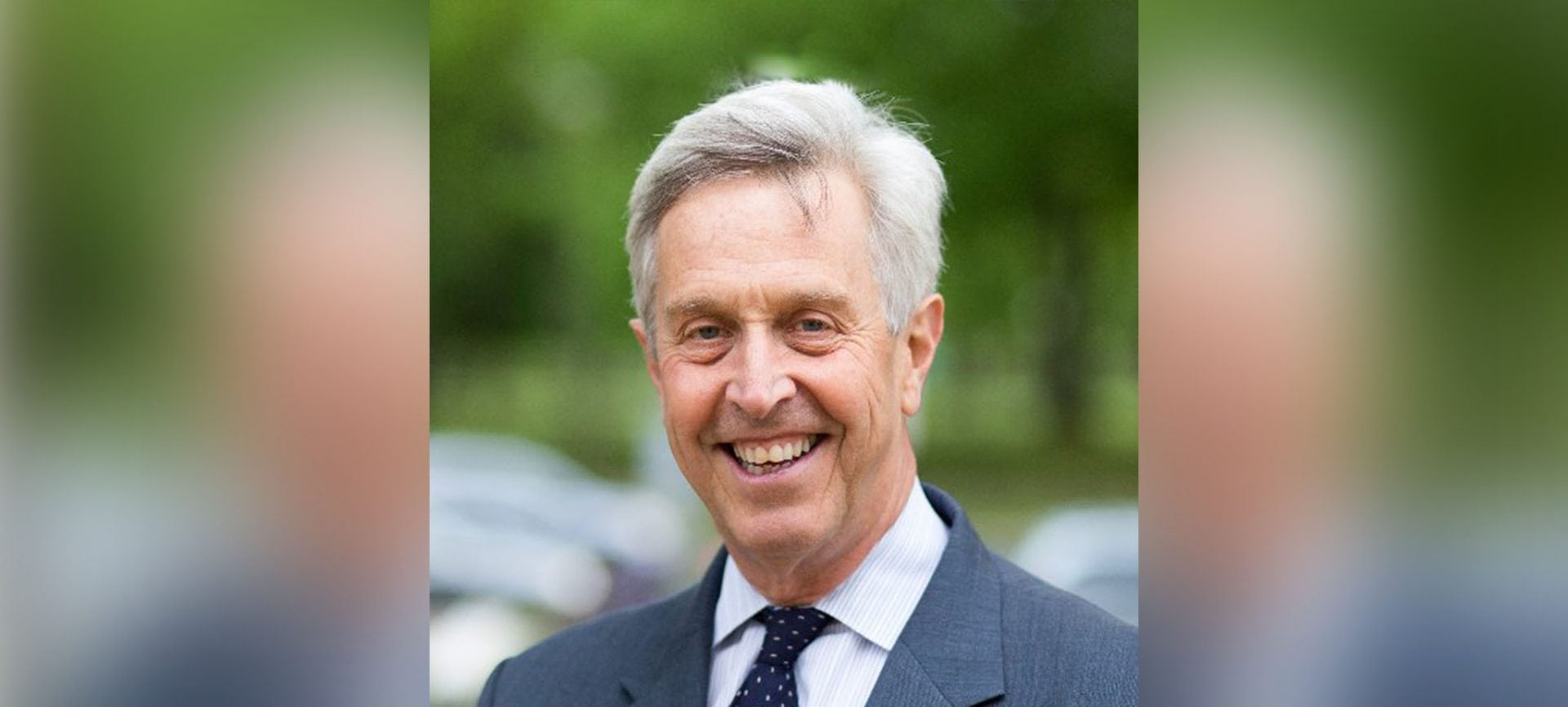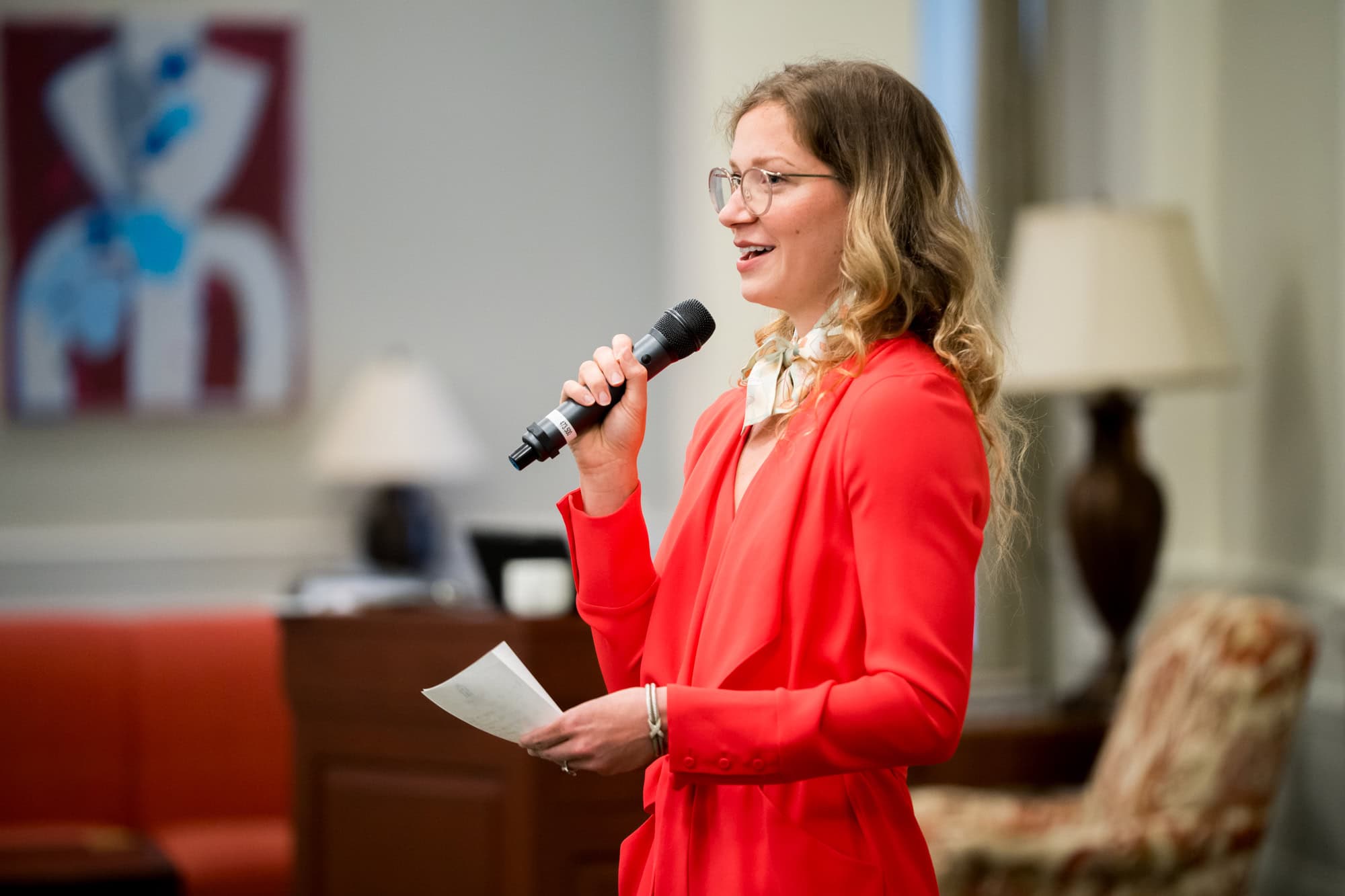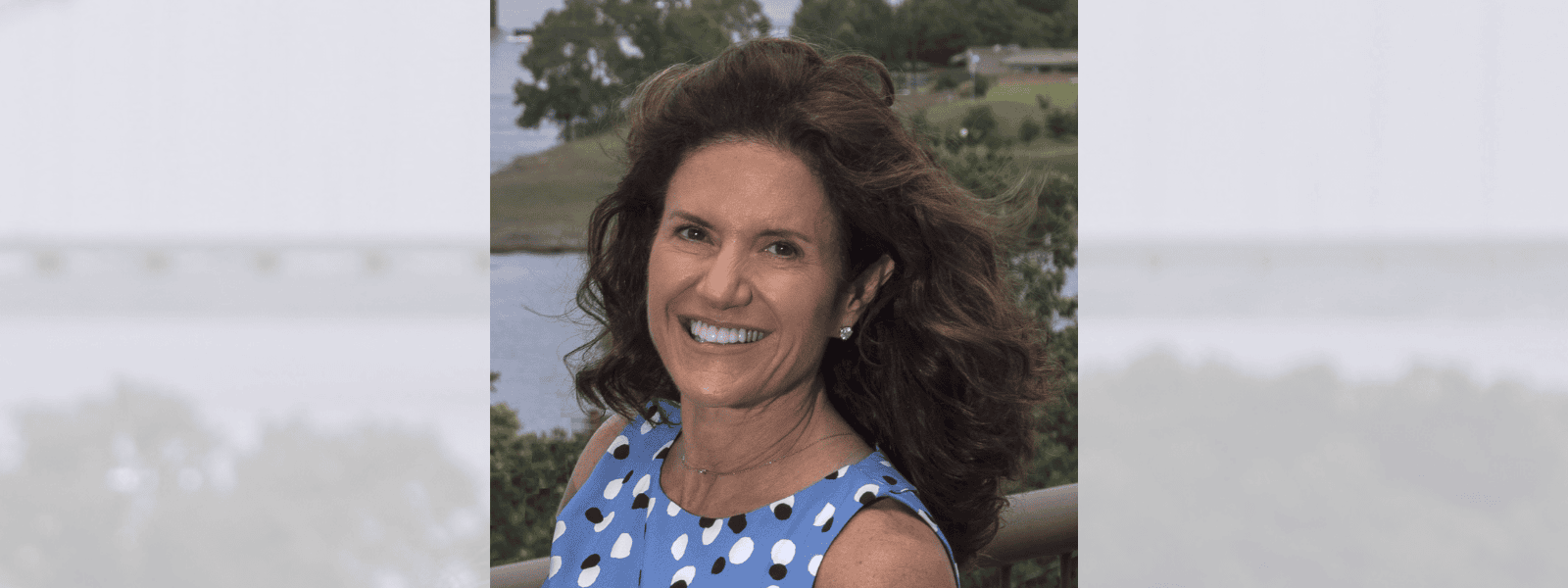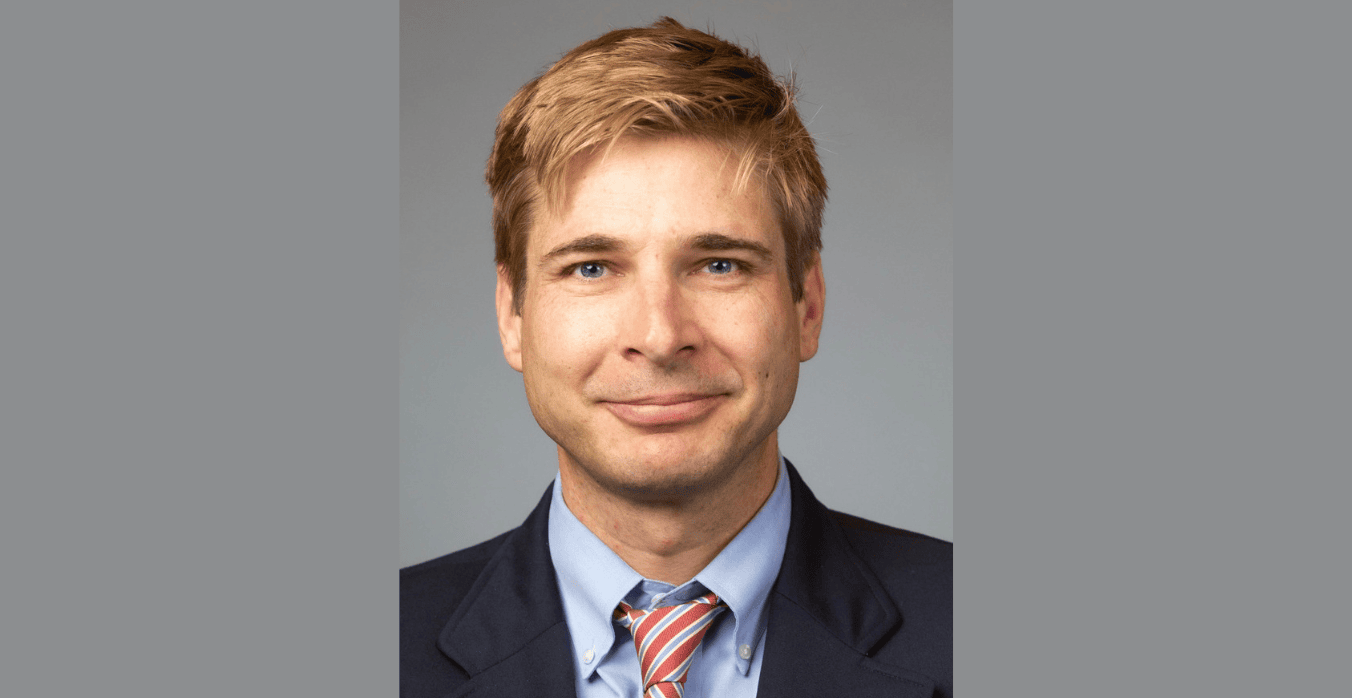
Bruce Gellin ’77 is president of the Sabin Vaccine Institute in Washington, D.C.
Morehead-Cain called Bruce Gellin ’77, president of global immunization at the Sabin Vaccine Institute in Washington, D.C., to get a better understanding of what would need to take place before a coronavirus vaccine could protect against the next global outbreak.
We also asked scholars to share their coping strategies amidst the pandemic (thanks to Nina, Drew, Lauren, Cameron, Lizzie, Michael, Cho, Grayson, and Luke for sharing their creative ideas). You’ll hear their responses at the end of the episode. The music for this episode is by scholar Scott Hallyburton ’22, guitarist of the band South of the Soul.
Music credits
The episode’s intro song is by scholar Scott Hallyburton ’22, guitarist of the band South of the Soul.
How to listen
On your mobile device, you can listen and subscribe to Catalyze on Apple Podcasts or Spotify. For any other podcast app, you can find the show using our RSS feed.
Catalyze is hosted and produced by Sarah O’Carroll for the Morehead-Cain Foundation, home of the first merit scholarship program in the United States and located at the University of North Carolina at Chapel Hill. You can let us know what you thought of the episode by finding us on social media @moreheadcain or you can email us at communications@moreheadcain.org.
Episode transcription
(Sarah)
Bruce, thanks for being willing to speak with me.
(Bruce)
It’s good to speak with you. Thanks.
(Sarah)
So we know it’s only been about three months since the coronavirus began to spread, yet we’re already seeing a host of pharmaceutical companies announce the beginning of trials for a vaccine. From what you’ve been able to learn about the ideas in the mix, do any of them seem promising or are there still too many unknowns at this point to reckon with first?
(Bruce)
I mean, I think that it’s too soon to tell. This is a new virus. And I think the important part to know about this is not only do we not understand everything about this virus, we also don’t understand immunity to this virus. For influenza, we’ve got it pretty well understood. But these coronaviruses are not influenza viruses. And if we’re going to understand how we’re going to protect people, we need to understand what kind of immunity is going to be protective.
We know that for some diseases, like measles, you have lifelong protection once you get measles. We don’t yet even know whether or not people who have have suffered a coronavirus infection are immune or for how long they’ll be immune. It’s our assumption that they are, every virus works that way. People who are infected then have some protection. But we don’t know how long it lasts.
We need to look at the level of immunity from natural infections and what the duration of immunity is. It may last a lifetime. It may last a short time. We’ll need to understand that as part of the vaccine development process. And I think as we look at these, we know that a number of these ideas aren’t going to get very far in the development process, but that’s what the development process is about. And while people talk about how long it might take — Dr. Fauci, he’s been out there saying it’s going to take a year or a year and a half — part of that is to be able to test it at various stages to make sure that what you are developing is what you wanted to develop and offered in the process of vaccine development. Things wash out because they don’t work or they don’t look like they’re safe. You can’t manufacturer them at scale. So those are all the things that are going to happen going forward.
Not everything is going to work its way to the finish line, which is the way it has to go, which is why it’s encouraging that there are so many ideas out there. But my guess is that, you know, there may be several different types of vaccines that come out at the end of this that will be available. And then we’ll have to make sure that there’s enough capacity globally to get them to the people who need them. There’s a large discussion about the need for global equity. We know that’s going to be a huge issue because there’s going to be much more demand than there is supply.
(Sarah)
And of course, the manufacturing process seems to be one of the most challenging aspects at play here. Can you share some of the obstacles that affect our prospects of mass producing a coronavirus vaccine such that anyone might be able to receive one, one day?
(Bruce)
Among them is we don’t know which of these vaccine approaches is going to work. And in developing a vaccine and in producing a vaccine, the production technology is pretty specific to that approach. I often tell people that it’s not like a bakery, where one day you can make cookies and the next day you can make muffins. If you’re going to develop a vaccine, the equipment to do that is specialized to the type of vaccine that you’re making. We know that flu vaccines are made in eggs, so there’s a whole system for developing vaccines in eggs. It’s unlikely that the coronavirus is going to work in that system.
There are a number of other ideas out there that are referred to as platform technologies and many of them are relatively new and they’re not at full scale. So the question is trying to think which vaccines might be the most promising, and starting now to think through where in the United States, and where globally, might need to be able to make these vaccines? Or do we have to start developing new facilities so that when the vaccine is proven to be the right one, we can start making it?
And “flattening the curve” means two things. As everybody is seeing, flattening the curve is to keep people out of the way of the virus, which then keeps people from being infected and clogging the health care system. The second part of flattening the curve is, until when? Until there’s enough immunity in the population that the virus can’t really travel that much, and can’t transmit between people because most of the population are immune.
And there’s two ways to get there: to recover from an infection, assuming the immunity you get is protective, and to be vaccinated. And that’s why there’s such a race of time for the vaccine, and that’s why scale is so important, because while we’re focusing on the time to get the first available vaccine, we also need to think of how long it’s going to be to get everybody vaccinated who either needs to be or wants to be. And that’s where the scale of manufacturing is so important.
(Sarah)
So you’ve alluded to this already, but there are a lot of equity implications that emerge from all of this. We’ve seen a sort of war room mentality nationally with respect to accelerating the development of a vaccine, but when it comes down to implementation, what are your thoughts in terms of how governments might mitigate inequality, or at least not exacerbate it, in thinking of coronavirus prevention and treatment in the future?
(Bruce)
Well, you know, that’s at a couple of levels. I think every country is going to have to decide that on their own. So, for example, when we thought about pandemic preparedness, we often thought about the kinds of groups who should be considered to get the vaccine when it’s first available. And obviously, you can’t really predict that ahead of time. You need to understand how the problem, in this case, the coronavirus pandemic, is unfolding because you’ll need to match that program with what the needs are.
But for example, when we did this with pandemic influenza, we thought about, for the United States, about small groups of people that should be considered early when a vaccine is available, such as people who are involved in homeland and national security. As you see now with the health care community, those are who are on the front lines, because we need to keep the health care system going. And similarly, those who do community support services.
There are others that are involved in keeping society going, which we refer to as the “critical infrastructure.” For example, emergency services, public safety personnel, fire fighters, the people who do communications and electricity, nuclear gas, water, sewage. So there’s an understanding of the people in the country who keep the critical infrastructure going. And we need to make sure that they are protected. They can go to work and keep that going as well. And then within the general population, are there some groups at higher risk than others?
So that’s a broad sweep of this, but that’s only to say that this is a way we thought about this for pandemic influenza. We have to rethink about what this means for the current situation. And every country would have to be thinking about this on their own because no country is going to have enough the first day that vaccines are available and need to be thinking that one through. But in parallel is the larger question about global equity. That’s the discussion that we have in the United States for the supply that we have.
Similarly, we need to be thinking about what this means for people around the world and how there’s going to be not just capacity, but a distribution system that allows allows fair distribution and equity for every country. Knowing that in each country, nobody’s going to have enough. And each country is going to have to define who their priority populations are as well. It’s not too early to start thinking about that because these are complicated conversations that are worth at least beginning to float now so that people can have them. So when vaccines are available, they have some understanding of how they got there.
(Sarah)
There’s a whole host of factors that biotech companies are having to take into consideration as they think about the possibility of a vaccine such as age, or respiratory illnesses, I’m sure there are many others. Can you walk us through some of those considerations?
(Bruce)
Well, I think that the definition of a pandemic is when there is a virus that is new and nobody has any immunity and it transmits between people, which is why we’re where we are. I think there’s recognition that nobody on the planet has any immunity to this right now, and therefore everyone would benefit from a vaccine. That said, as you think about different types of vaccines, not all could be available. Not all would be appropriate for everybody.
So, for example, people who have compromised immune systems probably shouldn’t get a vaccine that’s got a live or weakened form of the virus in it. There’s also been a discussion about, you know, what kind of vaccines would be safe for pregnant women. That’s only to say that those are considerations down the road. We first have to make sure we have a vaccine that can work and is safe for the general population, and then we can see if there are a number of different vaccines, which ones might be more appropriate for some of those vaccines, but for some of those vaccines more than others.
(Sarah)
So the Sabin Vaccine Institute is aggressively involved in developing a universal influenza vaccine. How has COVID-19 affected this focus, or has it perhaps expanded or respond to other efforts at the institute?
(Bruce)
The Sabin Vaccine Institute focuses on vaccines and vaccination, so it’s not surprising that this is something that’s been interesting for us, as you said. We had a project for a couple of years focusing on influenza because influenza remains, despite the fact that everybody is focused on the coronavirus, a huge threat for the same reasons as the pandemic. And because the influenza virus mutates quite rapidly and we know that it’s only a matter of time until it can turn into another virus that has similar qualities for which there is no immunity in the population. And we’ll have a similar effect.
So we haven’t changed our efforts on the development of a universal influenza vaccine because we recognize that that’s another vaccine that we’re going to need. The reason the universal vaccine is so important, and we refer to it that way, is because influenza viruses mutate so readily. That’s why we have to get a new vaccine every year to tailor make the vaccine for the season to match the viruses out there.
And the hope is that we can develop a vaccine that will not only handle seasonal flu, so we don’t have to adjust the vaccine for year-to-year variation but it can also be protective against the viruses no one has seen yet. The virus emerges because of some mutation or some recombination with an animal influenza virus that creates a new virus, which could have pandemic potential. So we’ve been pushing hard on that one, not only to think about whether the basic science is needed to create a universal vaccine, but trying to think of transformative ideas. Are there other things we should be thinking about that we haven’t yet? Should we look at this problem in a new way?
I think we were encouraged when, two years, ago Bill Gates went out there and had this grand challenge for a universal influenza vaccine. And it was really the theme that we’ve been pushing. We know how to work on our seasonal flu vaccines. We need new perspectives. We need new science. We need new scientists because we need to look at this problem from every possible angle to see if there’s something else we should be doing that we haven’t.
(Sarah)
Well, despite how fraught these terms are, it’s still relieving to hear from an expert to provide some context for the outbreak. Is there anything you’d like to add?
(Bruce)
Well, I think, you know, we’re going to be watching this process very carefully. There are a whole raft of ideas for therapies out there as well. We’ve heard about a couple. We’ve heard about some AIDS drugs that might be tried. We’ve heard about malaria drugs that might be tried. I know that the pharmaceutical companies have lots of molecules that they’ve developed for all kinds of reasons. And there’s a screening process going on now to see if anything that they have in their freezers might work against this.
So I’m encouraged that there’s so much attention there that something will come out of that relatively soon. And frankly, because there’s so much disease, it makes it relatively easy, if you can say it that way, to evaluate this. Because when there’s not much disease, when you have a real problem, then you have a hard time accumulating enough evidence here. We’ve got lots of people who can provide lots of evidence and the experience of what some of these products may do.
But switching back to the vaccine piece, I think the other thing to keep in mind is that it is about setting expectations. We know that in the process of developing, there are often bumps in the road. There are things about developing this vaccine that, maybe things will go shorter, maybe things will go longer. But one thing for sure is that not all these hundred ideas, and I don’t even know half of them, but not all of these hundred ideas are going to make it to the finish line.
(Sarah)
This is no extraordinary epiphany but lately, I’ve been thinking of just how many unforeseen consequences the coronavirus pandemic has caused. The economic fallout was perhaps more predictable, but things like not being able to see a relative in a nursing home due to physical distancing guidelines, these are things that I don’t think a lot of us have ever experienced before or that we really saw coming.
(Bruce)
Yeah, I mean, that’s what struck me when I got into this fifteen years ago, was realizing that what starts as a health problem escalates into a full global, socioeconomic problem. And that’s what you’re seeing everyday in some aspects of the news cycle of how this is tapping into that. And you need to pay attention to all of it. But that’s why, you know, if you don’t solve the health problem, you’re not going to solve the latter.
I think the challenge is how to how to handle both of those simultaneously. But I’m encouraged at least by what I’ve seen on the health side for both promising therapies and vaccines. They’ll never been here as fast as people want them but it seems that there’s enough investment, enough attention, enough coordination that will we’ll have what we need before long.
(Sarah)
Well, Bruce, thank you so much, I really appreciate it.
(Bruce)
Sure. Thanks for having me.
(Sarah)
Thank you for listening to Catalyze. I’m your host, Sarah O’Carroll, and that was Bruce Gellin of the Sabin Vaccine Institute. You can let us know what you thought of the episode or who you think should be featured next by finding us on Twitter or Instagram at Morehead-Cain or you can send us an email at communications@moreheadcain.org. Finally, to close out the show, we asked scholars to share with us their coping strategies amidst this pandemic. We got a lot of creative responses. Here’s what they said.
(Nina Fisher ’24)
Hi, everyone. My name is Nina, and I am recording from Ontario, Canada. I’ve been keeping busy during quarantine by practicing my handstands because I was always told that they need to last at least eight seconds, and I’m not there yet.
(Drew McRacken ’21)
Hey there, Morehead-Cain quarantine crew. This is Drew McRacken ’21, checking in with some of my favorite coping techniques thus far. I’ve been trying to pick up knitting, hacky sack, and playing the guitar. And, I also impulsively shave my beard. So, cheers.
(Lauren Gornto)
Hi, my name is Lauren Gornto. And my fun story from Quarantine is last week, my housemate Lizzie and I ordered some plain white ukuleles from Amazon and we painted them and now we have these cute little ukuleles to play and write songs with.
(Cameron Champion ’20)
One way I’ve been able to stick to routine better while living and taking classes at home is having a big whiteboard that tracks my sleep. My running and other exercise.
(Lizzie Russler)
Hi, my name is Lizzie and I am calling from Charleston, South Carolina. I’m one of the ways that I’m coping with these times of uncertainty has been to scrapbook my own yearbook.
(Michael Alcorn ’23)
Everybody, this is Michael Alcorn from the Class of 2023 calling in from Waxhaw, North Carolina. I hope everyone is happy and healthy. And some ways I’ve been coping with COVID-19 is by picking up new hobbies like skateboarding, yoga, and video games.
(Cho Nikoi ’23)
A fun way I figured out to make mundane activities more fun is to just film myself doing them. Whenever I make eggs in the morning, I film it and talk while I do it, and it just makes mundanity much more bearable.
(Grayson Sword ’23)
Hi, this is Grayson Sword, ’23, calling in from Asheville, North Carolina. I’m getting through quarantine by trying my hand in new recipes with my family. Up next, homemade banana bread and sourdough from scratch.
(Luke Buxton ’21)
My name is Luke Buxton and I’m a junior scholar at UNC. Outside of my classes and extracurriculars, I’ve been learning how to DJ to pass some stime, trying to learn about transitions, matching beats per minute filters, hot cues, loops. So I don’t know, maybe if the Morehead-Cain Foundation wants to move in the direction of EDM for the fall banquet. . . . Just saying, I could be your guy.
Note: This episode has been edited slightly for clarity.


